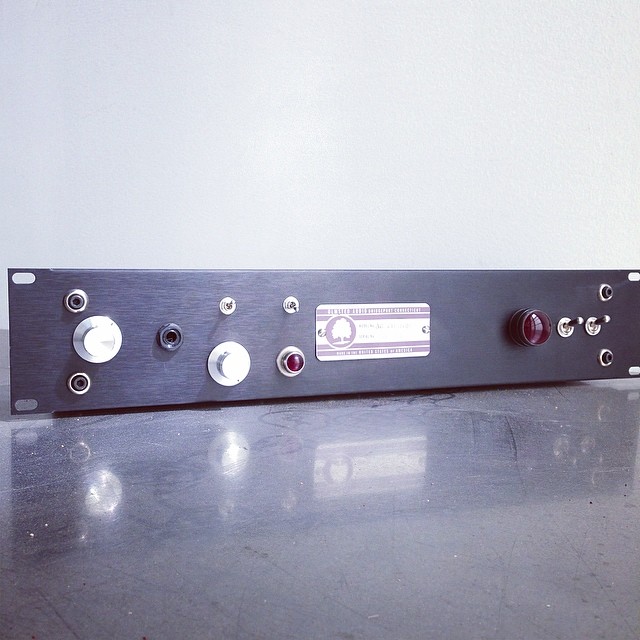 (Above: the prototype
(Above: the prototype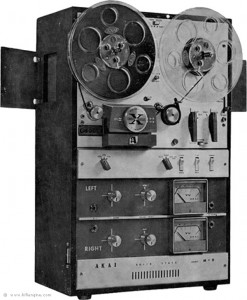 ) Apparently there is a popular internet ‘meme’ based around the modification of these units (the same machine was marketed under both the Akai and Roberts brand names). Here’s an example of one of these DIY sites. Handy types are encouraged to turn these stereo tape decks into four independent microphone preamps, and step-by-step instructions are available. After a look over the instructions and forum info, it was clear that these mods would present some challenges for use in a pro studio – especially as far as impedance and output level are concerned. My thought was: leave the Akai alone! And spend the time instead on a fresh build that utilized the most significant/interesting parts of this project, add a ton of useful add’l features, and pushes full +22 output level at 600 ohms.
) Apparently there is a popular internet ‘meme’ based around the modification of these units (the same machine was marketed under both the Akai and Roberts brand names). Here’s an example of one of these DIY sites. Handy types are encouraged to turn these stereo tape decks into four independent microphone preamps, and step-by-step instructions are available. After a look over the instructions and forum info, it was clear that these mods would present some challenges for use in a pro studio – especially as far as impedance and output level are concerned. My thought was: leave the Akai alone! And spend the time instead on a fresh build that utilized the most significant/interesting parts of this project, add a ton of useful add’l features, and pushes full +22 output level at 600 ohms.
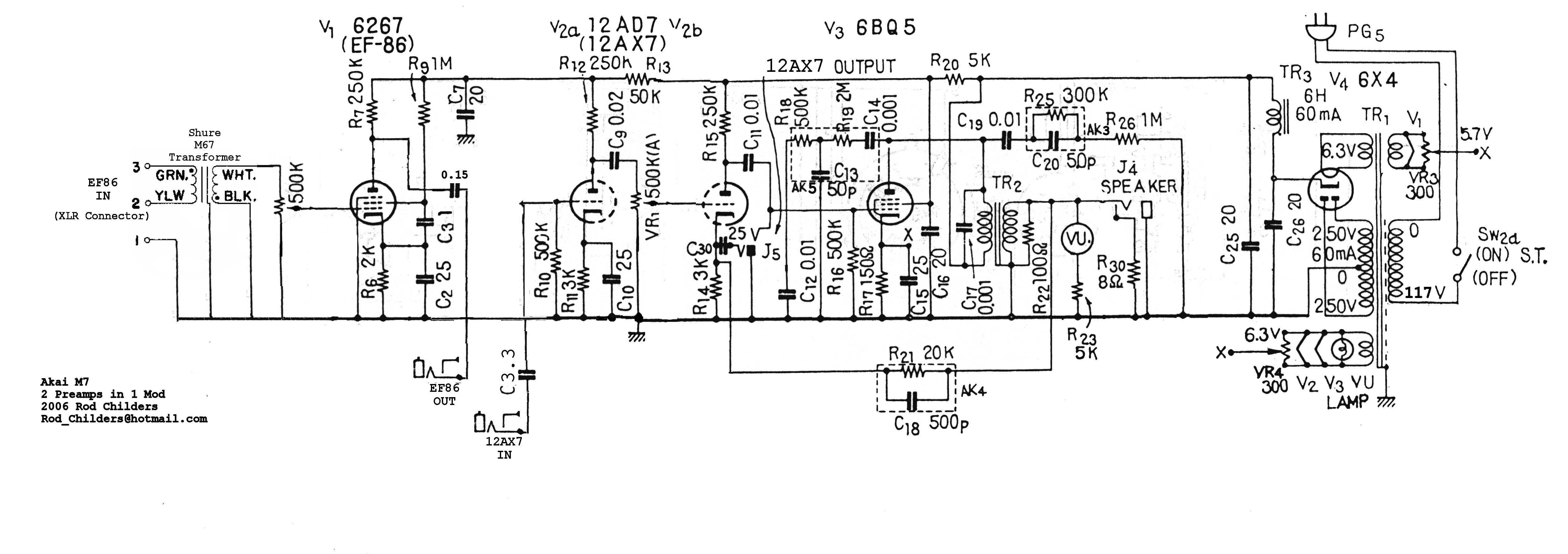 Above is the Akai preamp with the popular ‘Ron Childers’ modification notes added (I can’t seem to recall where I found this – if someone has an attribution link, pls LMK and I will add it). I began the prototype by building it as you see here, taking the output from the cathode of V2B. It was quickly apparent that the cathode of the 12AX7 was incapable of driving a 15K:600 output transformer to a high enough level. The solution was to replace the entire V2A/V2B section with a 12Au7-based voltage amp plus cathode follower similar to this classic RCA design:
Above is the Akai preamp with the popular ‘Ron Childers’ modification notes added (I can’t seem to recall where I found this – if someone has an attribution link, pls LMK and I will add it). I began the prototype by building it as you see here, taking the output from the cathode of V2B. It was quickly apparent that the cathode of the 12AX7 was incapable of driving a 15K:600 output transformer to a high enough level. The solution was to replace the entire V2A/V2B section with a 12Au7-based voltage amp plus cathode follower similar to this classic RCA design:
I repo’d the gain pot between the EF86 input stage and the first stage of the 12AU7, also adding a 1/4″ switching jack immediately ahead of the pot so that medium impedance (nominal 10K ohm) signals could be ‘directly injected’ into the 12Au7 stages (ideal for adding a little bit of gain and/or crunch to drum machines and synths). I also added phantom power and my familiar variable output pad (see here ). The pad is fully bypass-able via the TPDT switch located directly above the pot.
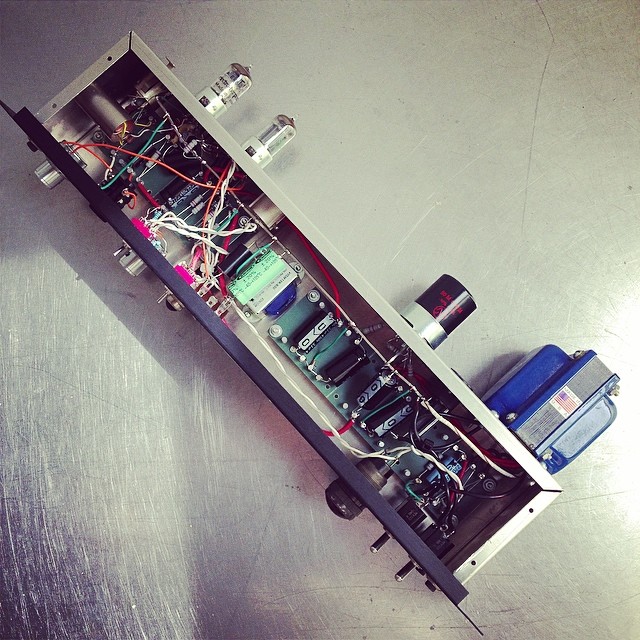 Above: inside the completed prototype
Above: inside the completed prototype
At left of the image above is input transformer. It’s a shielded unit as found in the ubiquitous Shure M67 ‘Mic Mixer’ that was sold in huge numbers for decades to churches, civic institutions, etc.
Many of the online Akai/Roberts discussions recommend using the 4 input transformers as-found in these units as donors for the ‘4 channel’ mod. Luckily I had a spare M67 in the junk pile (these things are readily available in the $10 – $50 price range) and so I pulled a transformer from it.
Above: T. Walsh at Gold Coast Recorders
I was pretty suspicious about the quality of these Shure transformers; even though they spec’d out OK as far as measured frequency response, I would have been much more inclined to use my standard Jensen 115 input transformer as I do in 90% of units that I build. I thought that the best thing to do was to really put the prototype unit through it’s paces. T. Walsh, himself an Akai machine owner, was kind enough to come to Gold Coast Recorders where we spent 3 hours writing and recording an entire pop track using only the prototype preamp on every source: drum kit (a Telefunken tube mic, in front), vocals (can’t recall,,,) , acoustic guitars (U87), hi hat (460), percussion (Royer), and all synths and drum machines were likewise routed through the front-panel input of the unit. Here’s the track. The lyrics are an homage to the Akai unit itself:
*************
*******
***
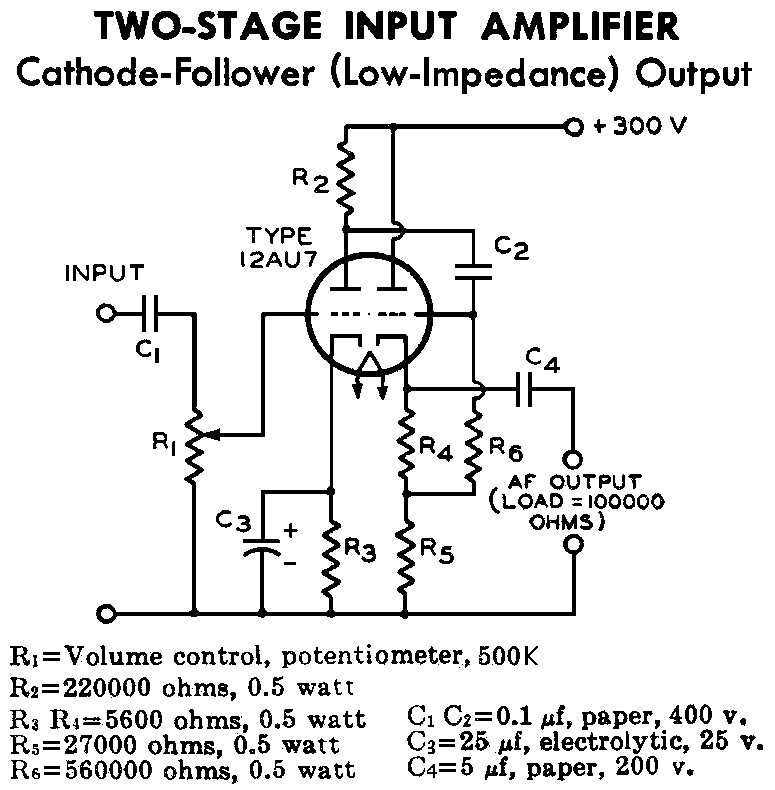
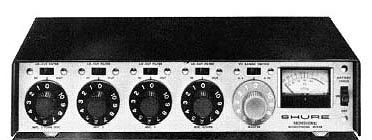
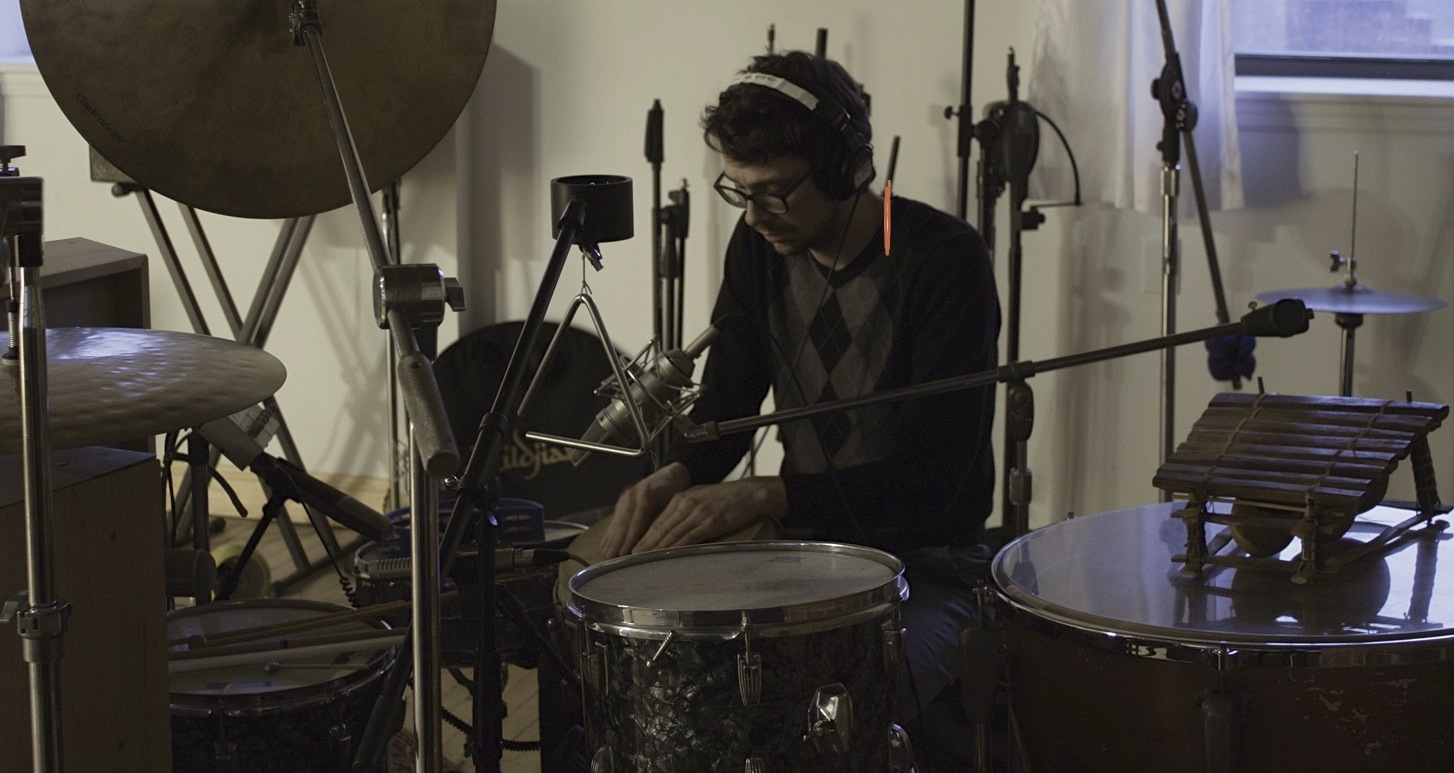
9 replies on “Bespoke Mic Preamp based on Akai/Roberts circuit”
Nice work Chris,
There’s a lot of features crammed into this one!
b.t.w. I was looking at the source website for that cathode follower circuit you posted in the article and this caught my eye:
http://diyaudioprojects.com/Technical/Papers/Direct-Coupled-6V6-Cathode-Follower-Amplifier/
The way the o/t is also the cathode resistor is interesting to me, I havent seen that configuration before.
Hi John. that is a pretty awesome circuit! I had never seen that either! I highly suggest that y’all check out the link on John’s comment – this (with an add’l 6J5 or 1/2 a 6SL7 at the front end) would make an awesome and unique lil gtr amp.
c.
Beautiful work, Chris. The value for C4 of that RCA two-stage input amp schematic varies between RCA tube manual editions. RC-17 shows C4 as 5 uf, while RC-20 shows C4 as .5 uf. Do you know which is correct? Also, does your Bespoke design use an OT? I’m following your lead here, using a 6SN7 and a 6SJ7.
hi Mike. I can’t recall, but it must be a .5.
a 5uf foil cap would be HUGE, you would easily spot it in the image.
OT is visible beneath the green PP supply cap. it’s an edcor 15k:600. I have used these dozens of time. very economical and great performance. be sure to watch the orientation relative to yr PT cos they are unshielded.
I take it you are using the 6SJ7 as the input pentode; are u using the 6SN7 as the output driver? If so, the component values will vary quite a bit; i am not sure that I have ever seen a 6SN7 implemented quite the same way that the 12Au7 is used here (frankly, you MIGHT just be able to parallel the 2 6SN7 sections and use it as a straight-up R/C amp with 50k plate load and a DC blocking cap b/w the plate supply and the O/T – this might give you a low enough source impedance to drive a 15K primary output trans. MIGHT.).
good luck
c.
Hi — just wanted anyone to know that the schematic you posted and lots more info on the Akai/Roberts stuff is now hosted at my site here: http://lacinato.com/cm/audio/robertsmod
Haven’t heard from Rod in a while, and the beyondsanityproductions.com site seems to be gone (for now, anyway).
Hi Chris.
Sorry for this question comming years after date. Really love this website you build over the years.
I Wanted to build this preamp for a long time now and finally got around to it. Found al the parts i need!
Just for having my facts straight: You never did use the 6BQ5 right in M7 design right? Just ef86–>12au7 and then to OT?
Thanks for so much reading pleasure all this time.
I have 3 of these old units now. 2 still with transport.
They sound fantastic.
Not only are they golden to playback and master recordings, and record microphones. They are utterly outrageous guitar amps.
I have driven these to the outermost gain imaginable and what they can do for a guitar is positively SICK.
I mean utter squalling mayhem without any breakup at all. AMAZING. TRULY BEAUTIFUL.
I made one into a portable head.
I’d like to ask you about this
I also have an old shure splitter. It was 5 bucks because the cannon plugs were sexually confused like most church/school gear. I had to fix that, not too easy either.
It needs no EQ or anything. I can plug in four #58 mics and send it into my ancient peavey PA head and they sound GREAT. SO CLEAN, SO FULL.
The best way EVER to add mic channels to a simple road PA.
Small and weighs almost nothing. Quality unsurpassed.